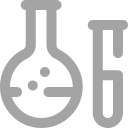
Product Description
Parthenolide is an NF-κB inhibitor, reduces histone deacetylase 1 (HDAC-1) and DNA methyltransferase 1 independent of NF-κB inhibition.
IC50 & Target: NF-κB, HDAC1, DNA Methyltransferase 1[1]
In Vitro: Parthenolide (PTL) has a dose-dependent growth inhibition effect on NSCLC cells Calu-1, H1792, A549, H1299, H157, and H460. Parthenolide can induce cleavage of apoptotic proteins such as CASP8, CASP9, CASP3 and PARP1 both in concentration- and time-dependent manner in tested lung cancer cells, indicating that apoptosis is trigged after Parthenolide exposure. In addition to induction of apoptosis, Parthenolide also induces G0/G1 cell cycle arrest in a concentration-dependent manner in A549 cells and G2/M cell cycle arrest in H1792 cells[2].
In Vivo: Only Parthenolide, the HDAC inhibitor with anti-inflammatory features, displayed a potent anti-apoptotic effect in Phb1 KO hepatocytes. Indeed, TSA and Parthenolide-treated hepatocytes showed increased levels of FXR, and reduced levels of CYP7A1, HDAC4, TNFα, TRAIL and Bax suggesting a less toxic effect of bile acids as a results of specific HDAC inhibition, resulting in the attenuation of the Phb1 KO hepatocytes apoptotic response. Importantly, Parthenolide exerts a protective effect from the liver injury after BDL in Phb1 KO mice. Indeed, Parthenolide treatment results in a reduction of the mortality rate of this mice after BDL associated with a lower apoptotic response as revealed by a reduction of necrotic areas, Tunel-staining, as well as decreased ALT (8431±957 vs.4225±210 U/L) and AST (4805±300 vs.2242±438 U/L) activities compared to control Phb1 KO mice[3].

Information
CAS No20554-84-1
FormulaC15H20O3
Clinical Informationclinicalinformation
PathwayAutophagy
NF-κB
Autophagy
TargetAutophagy
NF-κB
Mitophagy

Specifications
Purity / Grade>98%
SolubilityDMSO : ≥ 100 mg/mL (402.71 mM)
Smilessmiles

Misc Information
Alternative Names(-)-Parthenolide
Observed Molecular Weight248.32